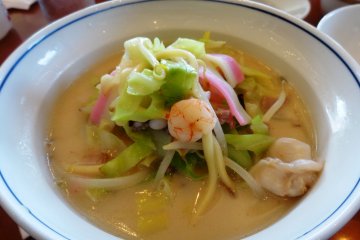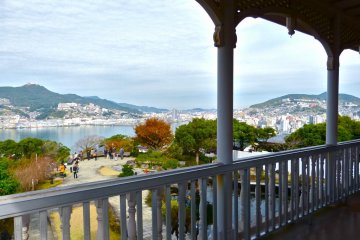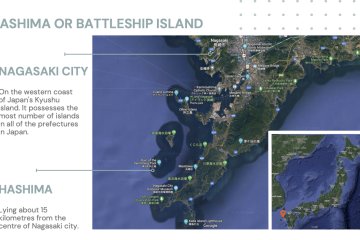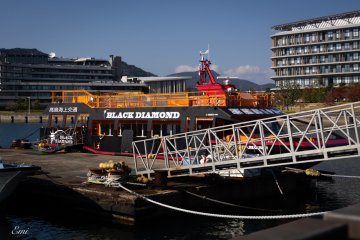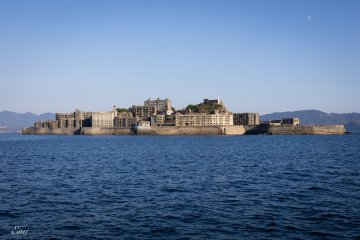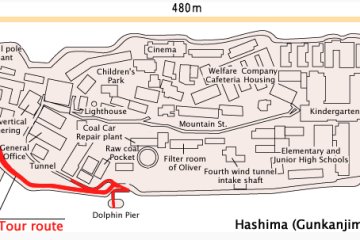Here is a short, one-minute video from the tour of Hashima Island I took. Join us on a journey to uncover the secrets of Hashima Island.
As of January 15, 2024, 50 years have passed since Hashima Island, famously known as "Gunkanjima" or Battleship Island, closed permanently. Several Japanese media reported on the 50th-anniversary ceremony of Gunkanjima's closure, welcoming a few former residents at Gunkanjima Digital Museum on the 15th.

"Every day looks different due to such natural conditions.”
Typhoons and other catastrophic events have directly struck the island, causing damage to the seawalls that are still standing. The historical site of the island has not been restored since it was abandoned.
A tour guide told us during the island tour that "Every day looks different due to natural conditions." Explore this UNESCO World Heritage site in Nagasaki, where the intersection of history and nature paints a mesmerizing picture of daily transformation amid the remnants of an industrial past.
Hashima Island boasts several records—it is a UNESCO World Heritage site and was once the world’s most densely populated island, with as many as 5,259 residents in 1959. Japan's first submarine water system was also built on the island, making the water supply easier to secure. In addition, some film companies were attracted to the island and created productions including the James Bond film, “Skyfall” and the Japanese manga series “Attack on Titan.”

Most of the people on the island in Nagasaki City worked in the undersea coal mine. However, this artificial land had everything to ensure people were taken care of—an elementary school, a hospital, a theater, a shrine, and more.
The island’s history:
In 1890, the Mitsubishi company purchased the reefs to dig an undersea coal mine. However, the reefs were likely too cramped for miners and their families to live on. The seawall embankment was repeatedly extended in the form of six rounds of reclamation projects around the island from 1897, according to a Gunkanjima guide site. As the workforce increased, the company could mine and sell more coal. During the Meiji period, the island was almost exactly as it is today, having almost tripled in size, reclaimed and constructed in its present form—becoming one of the world heritage sites.

Significances:
Securing water on Gunkanjima was extremely problematic, as there were no rivers, ponds, or springs on the island. After the island came under the control of the Mitsubishi company, they established Japan's first submarine water system, providing water supply to residences. Construction began in 1956 on laying two 150-mm steel pipes on the 6.5-kilometer seabed from Takero (Nagasaki's mainland) on the opposite shore to Hashima Island and was finished the following year.

Residents of Hashima Island seemed to enjoy a relatively high standard of living, evident in the presence of TVs in every home. A rooftop became a greenery garden in 1996 and hit a recode to be the first farm in Japan. The purpose of building the farm on top was to educate children.

Tour:
Landing on Gunkanjima requires authorization and only five tour companies in total are allowed. Twice a day each company is allowed to land, for a total of 10 daily cruises only. More importantly, it’s all up to the weather and natural conditions if you can land. Every tour site shows the potential risk before you reserve a seat.
- You may not be able to land on the island when the wind velocity reaches above 5 meters per second, the wave height reaches above 0.5 meters or the visibility is 500 meters or less. Also, you are not able to land on it when the captain decides that visitors are not able to disembark safely. In the event, you are not able to disembark, you will receive a souvenir. You won’t be charged an entrance fee.
- Also, for safety reasons, people are allowed to walk just one-eighth of the size of the town today. You are only capable of viewing most ruins and historical buildings from a boat.
Keep in mind that while some cruises offer English booking options, it appears that tour guides predominantly explain and speak in Japanese. However, there are brochures available that are written in English.

Hashima Island, also known as "Gunkanjima" or Battleship Island, has become a popular tourist spot in Japan, not only because it designated as a UNESCO World Heritage Site, but also for its unique benchmarks. This once vibrant undersea coal mine was abandoned in 1974; however, uncovered history and stories remain. Immerse yourself in the history of the island, delving into its captivating past and cultural significance.

More about Gunkanjima and Nagasaki:



